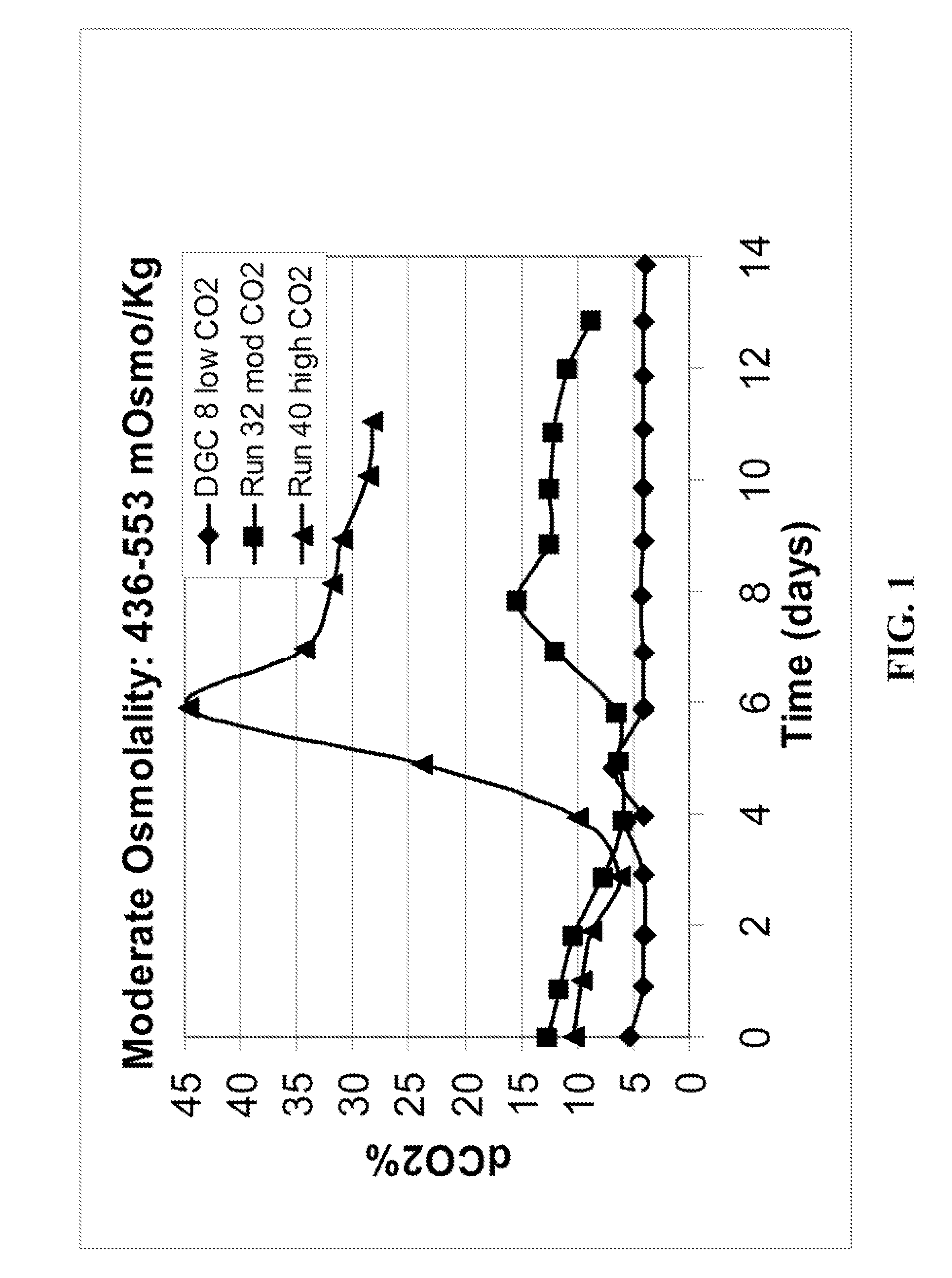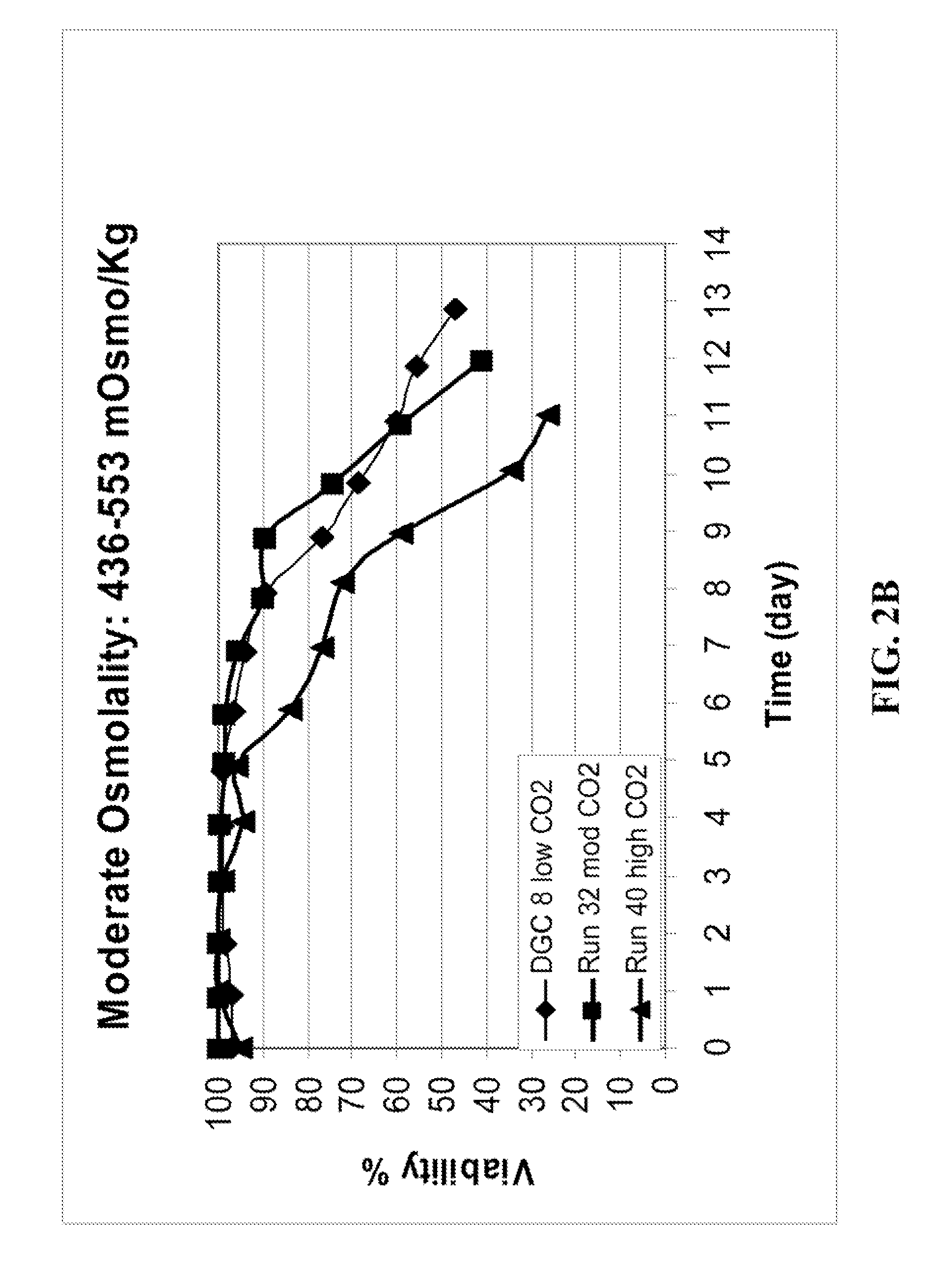METHOD FOR CONTROLLING pH, OSMOLALITY AND DISSOLVED CARBON DIOXIDE LEVELS IN A MAMMALIAN CELL CULTURE PROCESS TO ENHANCE CELL VIABILITY AND BIOLOGIC PRODUCT YIELD
a cell culture process and ph technology, applied in the field of methods, can solve the problems of adversely affecting cell viability, simultaneous and independent control of dissolved carbon dioxide levels and osmolality becomes difficult, and achieves the effects of enhancing cell growth, cell density, product yield and product concentration
- Summary
- Abstract
- Description
- Claims
- Application Information
AI Technical Summary
Benefits of technology
Problems solved by technology
Method used
Image
Examples
Embodiment Construction
[0038]Dissolved Carbon Dioxide, pH and Osmolality Relationship
[0039]With the majority of the commercial-scale mammalian cell culture manufacturing shifting to fed-batch processes, controlling to maintain a relatively constant osmolality, pH and dissolved carbon dioxide level is nearly impossible. Addition of nutrients and cell boosters during the fed-batch process will always tend to increase the cell culture osmolality, while pH and dissolved carbon dioxide levels are constantly changing throughout the process.
[0040]For example, carbon dioxide generated during the exponential growth phase can outpace the carbon dioxide stripping capacity of most current bioreactors, resulting in a continuing increase in dissolved carbon dioxide levels. This continuing rise in dissolved carbon dioxide levels often requires the addition of an alkali to neutralize the effect of the dissolved carbon dioxide on pH, since controlling the pH of the cell culture medium is viewed as one of the most critical...
PUM
| Property | Measurement | Unit |
|---|---|---|
| working volume | aaaaa | aaaaa |
| volumes | aaaaa | aaaaa |
| working volume | aaaaa | aaaaa |
Abstract
Description
Claims
Application Information
 Login to View More
Login to View More - R&D
- Intellectual Property
- Life Sciences
- Materials
- Tech Scout
- Unparalleled Data Quality
- Higher Quality Content
- 60% Fewer Hallucinations
Browse by: Latest US Patents, China's latest patents, Technical Efficacy Thesaurus, Application Domain, Technology Topic, Popular Technical Reports.
© 2025 PatSnap. All rights reserved.Legal|Privacy policy|Modern Slavery Act Transparency Statement|Sitemap|About US| Contact US: help@patsnap.com



